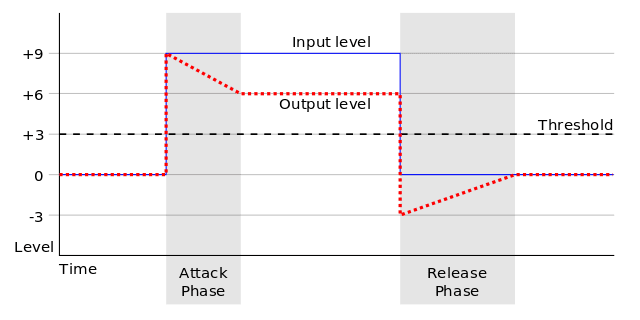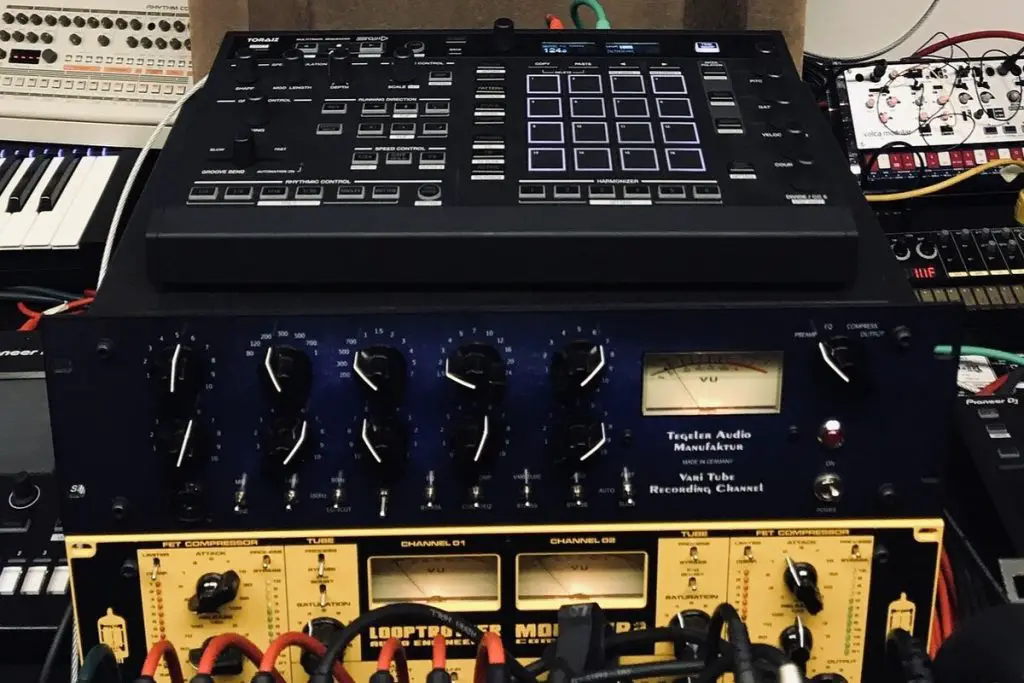Ever wondered how your favorite songs achieve that perfect balance of sound? It’s all about attack and release, baby. This powerful technique is the secret sauce to creating those punchy, dynamic tracks that keep us grooving all night long. If you’re looking to elevate your music production skills to new heights, you’ve come to the right place.
In this post, we will delve into the fundamental concepts of compressors, providing you with a detailed understanding of compressor attach and release settings. It’s time to unleash your creative potential and take your music to the next level. So let’s dive in and explore the intricacies of compressors.
What is compressor attack and release? Attack and release are fundamental concepts in music production that involve manipulating the dynamics of a sound wave. Attack refers to the initial increase in the volume of a sound, while release refers to the decrease in volume following the attack. These techniques are used to shape the overall sound of a track and are essential for creating a polished, professional mix.
How do attack and release affect audio?
Attack and release are crucial parameters that can significantly affect the sound of audio. Attack refers to the initial increase in the volume of a sound, while release refers to the decrease in volume following the attack. By adjusting these parameters, producers can shape the overall sound of a track.

Increasing the attack time can make the sound more pronounced and punchy, while decreasing it can make it sound more natural and mellow. For example, a fast attack time on a drum can make it sound sharper and more prominent in the mix, while a slower attack time can make it sound more natural and less emphasized.

AKAI Professional MPK Mini MK3

AKAI Professional MPK Mini MK3
What is considered a fast and slow attack speed?
A fast attack speed on a compressor, typically in the range of 10 microseconds to 1 millisecond, allows the compressor to respond quickly to sudden spikes in volume. On the other hand, a slow attack speed on a compressor, typically in the range of 10 to 100 milliseconds, allows the compressor to let some of the initial transients through before reducing gain.
Fast attack speed (10 microseconds – 1 millisecond)
A fast attack speed allows the compressor to begin reducing the gain of the signal almost immediately after the input level exceeds the threshold. Fast attack speeds are useful for taming transient-heavy sounds such as drums, percussion, or plucked string instruments.
These sounds can have very fast and sudden increases in volume, which can cause distortion or clipping if not controlled. By using a compressor with a fast attack time, you can quickly reduce the gain of these transient sounds, preventing them from overpowering the rest of the mix.
However, a fast attack time can also cause some loss of dynamic range and naturalness in the sound. This is because the compressor is reducing the gain almost instantaneously, which can make the sound feel a bit flattened or dull. For this reason, it’s important to use a fast attack time judiciously and only when necessary.
Slow attack speed (10 to 100 milliseconds)
Slow attack speeds are useful for preserving the naturalness and dynamic range of sounds that have a lot of transients, such as acoustic guitar or piano. By allowing the initial transient to pass through before starting to reduce the gain, a slow attack time can help maintain the punch and impact of the sound while still controlling the overall dynamic range.
This means that the compressor will wait a short period before starting to reduce the gain of the signal, allowing the initial transient to pass through without being compressed. However, a slow attack time may not be suitable for sounds with very fast transients, such as drums or percussion. In these cases, a fast attack time may be necessary to quickly reduce the gain and prevent distortion or clipping.

What is considered a fast and slow release speed?
Adjusting the release time can affect the sustain and decay of a sound. A longer release time can create a more sustained sound, while a shorter release time can make it sound more abrupt and staccato.
Fast release speed (50 to 100 milliseconds)
A fast release speed on a compressor, typically in the range of 50 to 100 milliseconds, allows the compressor to quickly stop reducing gain once the signal drops below the threshold. This means that the compressor will release its gain reduction almost immediately after the signal falls below the threshold.
Fast release speeds are useful for preserving the natural decay of sounds and preventing the compressed signal from sounding overly squashed or flattened. By releasing the gain reduction quickly, the compressor allows the natural decay of the sound to come through, resulting in a more natural and dynamic sound.
However, a fast release time may not be suitable for sounds with sustained or continuous levels, as the compressor may release too quickly and not maintain the desired amount of gain reduction. In these cases, a slower release time may be necessary to maintain a consistent level of gain reduction over time.
Slow release speed
When the release time is set to a slow speed (typically between 2 to 5 seconds), it has a smoothing effect on dynamic performances. This means that the compressor gradually reduces the gain reduction applied to the signal, allowing the audio to recover its original dynamic range in a slower and more subtle manner. This can be beneficial for creating a more controlled and polished sound in certain contexts, such as smoothing out the variations in a vocal performance or instrument recording.
…setting the release time too slow can have negative consequences. If the release time is excessively long, the compressor may excessively attenuate the signal, resulting in a dull and flat sound that lacks energy and vitality.
Furthermore, a slow-release setting can be used to push an instrument back in the mix, creating a sense of depth and making it sound farther away from the listener. By extending the release time, the compressor maintains a lower gain reduction for a longer duration, effectively reducing the perceived volume and presence of the instrument in the mix.
However, it’s important to note that setting the release time too slow can have negative consequences. If the release time is excessively long, the compressor may excessively attenuate the signal, resulting in a dull and flat sound that lacks energy and vitality. Therefore, it’s crucial to find the right balance and adjust the release time according to the specific needs of the audio material being processed.
How to set compressor attack and release times
Setting the attack and release times of a compressor is a crucial step in music production to shape the dynamics of the sound. It takes practice and patience, but mastering this skill is essential for achieving a polished, professional sound in music production. Here’s how you can set compressor attack and release:
1. Understand the basics
Before setting the attack and release times, it’s essential to understand how they affect the sound. Attack time refers to the speed at which the compressor reacts to an increase in volume, while release time refers to the speed at which the compressor returns to normal volume levels after the volume has decreased.
2. Set the threshold
Adjust the threshold level at which the compressor starts working. The threshold determines the volume level at which the compressor starts to react.
3. Set the ratio
The ratio determines how much the volume is reduced when it goes above the threshold. Set the ratio based on the desired amount of compression.
4. Set the attack time
Adjust the attack time to determine how quickly the compressor reacts to an increase in volume. A faster attack time means the compressor will react quicker to loud sounds, while a slower Attack time will allow more transients through.
5. Set the release time
Adjust the release time to determine how quickly the compressor returns to normal volume levels after the volume has decreased. A faster release time means the compressor will react quicker to quieter sounds, while a slower release time will allow the volume to stay compressed for longer.
6. Listen and adjust
Listen carefully to the sound and make adjustments to the attack and release times as needed. Make small adjustments to each parameter until the desired sound is achieved.
7. Experiment with different settings
Remember that there’s no one-size-fits-all approach to setting the attack and release times. Experiment with different settings to find the right balance for your track.
If you want even more tips and insights, watch this video called “Attack and release compression settings explained” from the Help Me Devvon YouTube channel.
Conclusion
Well, folks, that’s a wrap on attack and release. With a little practice and experimentation, you’ll be shaping sound waves like a pro in no time. Did I answer all your burning questions about attack and release? Or are you still feeling a bit perplexed? Let me know in the comments below! I read and reply to every comment.
And if you found this post helpful, be sure to share it with your music-loving friends. Together, we can all create tracks that make the world dance. Thanks for tuning in, folks. Until next time, keep creating and keep grooving.
Key takeaways
This article covered attack and release. Here are some key takeaways:
- Attack and release are fundamental techniques used in music production to manipulate the dynamics of a sound wave.
- Attack refers to the initial increase in the volume of a sound, while release refers to the decrease in volume following the attack.
- By controlling attack and release, producers can shape the overall sound of a track and add dynamics.
- Attack and release can be applied to various music genres, and there are different techniques for adjusting them depending on the desired effect.















